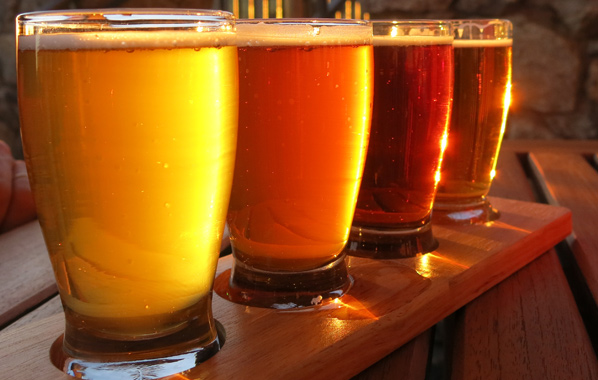Not everything that is popular is good, but some things are so good they cant’t help being popular. Such is the lot of pale ale, a beer so beguiling that it is loved equally by novices and connoisseurs. The attraction begins at first glance; pales, whatever their hue, are brewed to please the eye. Like so many descriptive styles, “pale” is relative. American versions tend to be honey-colored to amber, while British versions are often a deeper copper. Both are bright and clear, capped with snowy white or eggshell heads. The pleasures continue with the nose, where caramel malts and sunny, lively hops spring out of the glass, and the tongue, which is greeted by an explosion of flavor that always stops safely shy of challenging. Pales are buoyant and full of life; uncomplicated, for sure, but never boring.
Pale ales are hop forward, but they rely on a foundation of malt sweetness that tends toward biscuit and toffee. The hops are used more to scent and flavor the beer than add sharp bitterness (as they would in an IPA); the tongue will find bursts of citrus, pine, or flowers, not a lacerating, bitter cut. Effervescent, light, and appetizing, pales are among the most versatile beers at the dinner table, contrasting the acid of tomato paste and vinaigrette as well as they complement fresh fish or semisoft cheeses.
Statistics
Abv range: 4.5 – 6%
Bitterness: 25-50 IBU
Vessel : English pint glass
Source: Тhe beer Bible ISBN 978-0-7611-6811-9







